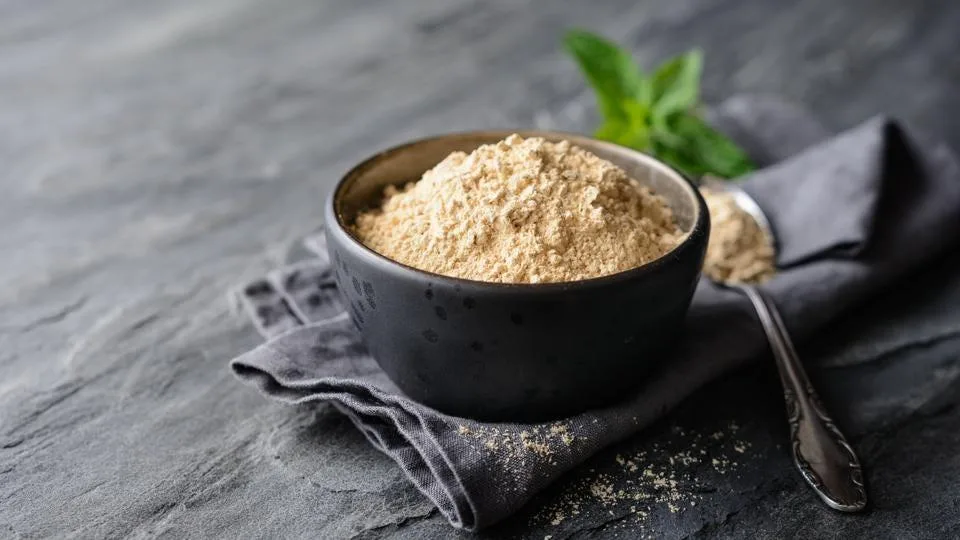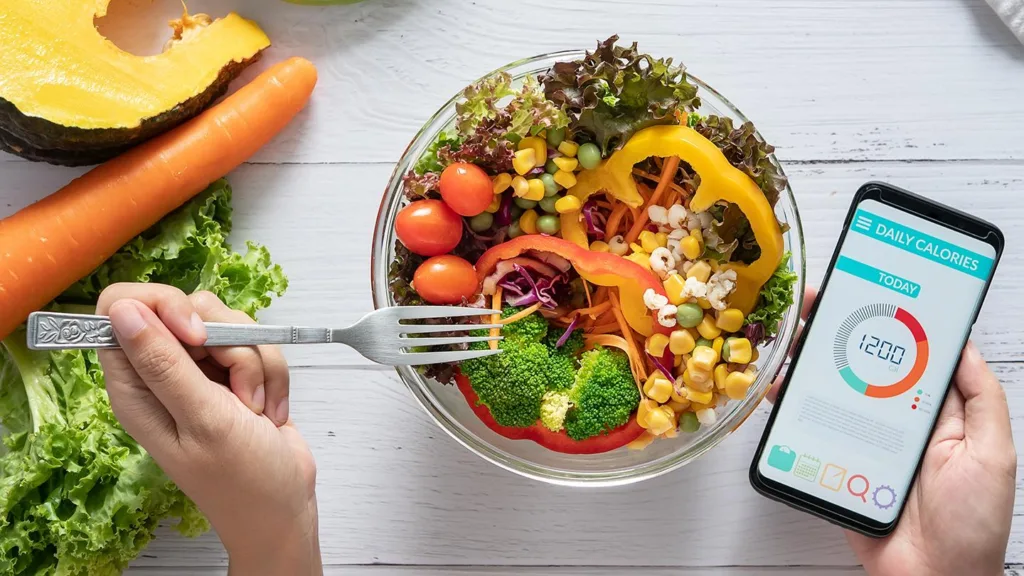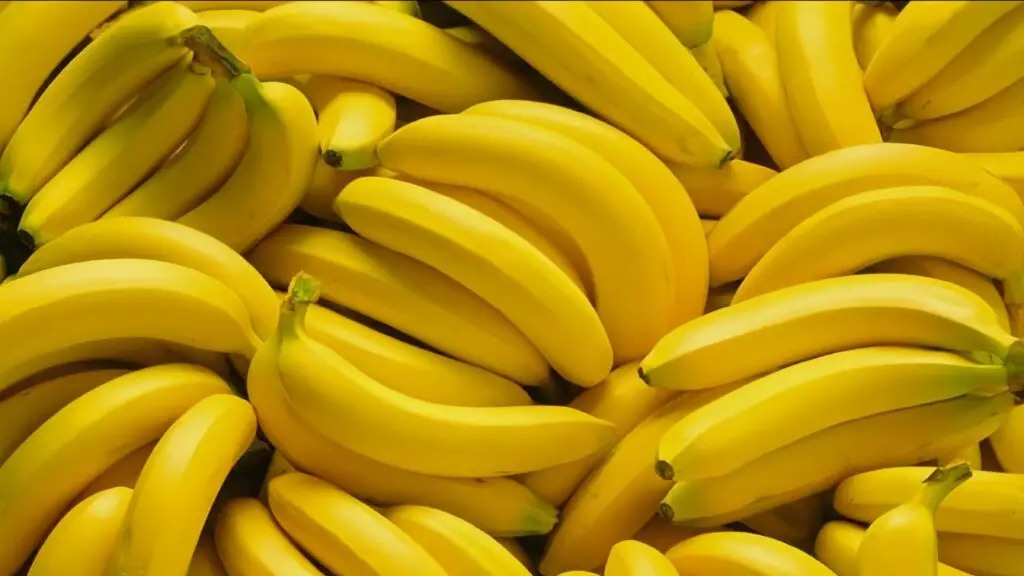Table of Contents
TRANSCRIPT
Proteins are essential for building and repairing our bodies. Normally, proteins stay in the bloodstream because they are too large to pass through the filtering system of healthy kidneys. When significant amounts of protein are found in urine, it’s called proteinuria (1).
In our previous video, we explained extensively the major causes and symptoms of proteinuria. In case you haven’t watched that video, we’ll provide a summary here.
Normally, adult urine protein levels are less than 150 mg after collecting the urine for 24 hours. Levels between 150 and 500 mg are considered moderate proteinuria. Severe proteinuria occurs when protein levels reach more than 500 mg (2). When diving into this topic, you might see the terms proteinuria and albuminuria used interchangeably, but they actually mean different things. Proteinuria means there is too much protein of any kind in the urine. Albuminuria is when the urine specifically contains too much albumin, the most common protein found in blood (3).
Often, there are no symptoms with proteinuria, but in some cases, the urine may look frothy, and the person may develop swelling (edema). Urine protein levels can temporarily increase after exercise or illness. However, if they persist, it could indicate kidney disease, and reducing proteinuria can help protect your kidneys from further damage (1, 4).
To lower protein in the urine, we need to treat its root cause, which is often kidney disease (5). Triggers for kidney disease include high blood pressure, high blood sugar, and high blood cholesterol levels (6, 7, 8). The increased force from high blood pressure injures the filtering units of the kidneys, causing proteins to leak into the urine (9). Elevated blood sugar from diabetes can damage small blood vessels in the kidneys, which then affects the filters and leads to protein loss (10, 11). Additionally, cholesterol can form plaques along the artery walls, blocking blood flow to the kidneys, which impairs their function and also causes proteinuria (6, 12).
This is why keeping blood pressure, blood sugar, and blood cholesterol levels in check is important to prevent kidney damage. In our previous video, we suggested the top foods to help stop proteinuria. Today, we’ll continue with the top drinks that can benefit your kidneys, backed by scientific studies. You’ll also get practical tips for adding these drinks to your diet to support kidney health.
Before we dive in, please note, all the information in this video is created by real people. You can visit our website at healthtoday.com to see our advisory board and the team behind these videos. We do not rely on AI tools like ChatGPT for automatic content generation. Be assured, our information is thoroughly fact-checked, unbiased, and reviewed by qualified professionals. Now, let’s return to the top drinks to help stop proteinuria.
Top 9 Drinks To Help Stop Proteinuria
9. Berry Smoothie
This smoothie is a mix of berries and other kidney-friendly fruits blended to make a drink that supports kidney health. Each berry type has its unique value, offering various kidney benefits, especially for proteinuria.
For example, strawberries are rich in antioxidants like anthocyanin. They help to counteract the effects of oxidative stress and inflammation in the body (13). By reducing these kidney-damaging factors, antioxidants from strawberries can promote the health of kidney cells. Additionally, certain nutrients in strawberries help lower cholesterol levels (13). This has the potential to reduce and prevent the buildup of plaques in blood vessels that obstruct blood flow to the kidneys.
Blueberries are another kidney-friendly option. Like strawberries, they are rich in antioxidants, such as anthocyanins (14). A 2004 study found that a cup of cultivated blueberries provides 9,019 antioxidants, while wild (lowbush) blueberries are packed with 13,427 antioxidants per cup (15)! Blueberries have been shown to lower cholesterol levels (16). That’s because berries are high in fiber, which helps remove cholesterol from the blood by promoting its excretion from the body in the form of bile (17).
Next, honeysuckle berries may help filter out heavy metals and drug toxins (18), which can reduce strain on the kidney filtration system. Moreover, the anthocyanins in honeysuckle berries can help improve blood flow and reduce inflammation, which can greatly benefit the kidneys (18).
Another popular kidney-friendly berry is açai berries, which are often bought frozen for use in smoothies. These berries are also rich in antioxidants, which help prevent damage to cells (19).
Try the Very Berry Smoothie for your kidney health. This is a refreshing blend of pineapple, banana, and berries. You can mix them to your taste, with each serving containing about 2 cups of fruit (20).
When buying berries for your smoothie, go organic. Some berries have high pesticide levels, according to the Environmental Working Group (21). Try to look for products labeled Integrated Pest Management (IPM). They use a variety of pest management techniques, and chemical pesticides are only adopted when other methods fail to protect the plant. Better still, you can find organic berries because organic farming does not use harmful pesticides that can negatively impact the kidneys. If you buy non-organic berries, soak them in lemon juice or filtered water with baking soda to remove residues (17). Also, note that açai berries are often available as powder, frozen puree, or juice because they spoil quickly. It’s best to read the label to see if there is extra salt or sugar. Remember, dried berries aren’t equivalent to putting fresh ones in your smoothies.
8. Turmeric Milk
Turmeric, a spice from the ginger family, originates from southern India and Indonesia (22). Ayurvedic and traditional Chinese medicine have long incorporated this spice in their therapies (23).
Curcumin is the active component of turmeric and can help with proteinuria. It does this by stopping the actions of chemicals in the body called, which cause inflammation that can harm the kidneys. Inflammation can damage the filtering system, letting proteins leak into the urine. By blocking cytokines, curcumin helps protect kidney cells and lessens proteinuria (24).
Curcumin also helps protect your kidneys from the negative impact of high blood sugar (24).
A 2012 study in Nutrition and Health also suggests that consuming turmeric may help protect against kidney damage caused by oxidative stress. In this study, researchers gave rats gentamicin, a drug known to induce kidney damage in high doses. One group of rats was given turmeric and ginger prior to the drug. After analyzing the markers of kidney damage in these rats, they found that turmeric and ginger significantly protected the kidneys from damage caused by gentamicin and reduced oxidative stress (25).
In a review article published in 2022 in the Iranian Journal of Kidney Diseases, researchers analyzed how oral turmeric supplements affected proteinuria in patients with chronic kidney disease (CKD). They found that curcumin supplementation led to a notable decrease in proteinuria in those taking it compared to those not taking it. This suggests that turmeric could be a helpful treatment for these patients (26).
Making turmeric milk, or golden milk, is a simple and tasty way to consume more of the spice while supporting your kidney health. Just mix 1 to 2 teaspoons of turmeric with warm milk, black pepper, cinnamon, and honey or maple syrup. Heat it gently for about 10 minutes. Black pepper helps your body absorb curcumin. Plus, adding turmeric to meals containing oil can also help your body absorb curcumin more effectively (23). Using this spice to flavor your smoothie or soup is also a great way to enjoy its kidney-boosting benefits.
Turmeric and regular curcumin supplements are considered generally safe when used as directed. However, during pregnancy and breastfeeding, you should avoid consuming large amounts of turmeric beyond what’s normally found in food (27). It’s best to ask your doctor how to take turmeric or any other supplements appropriately for your individual health concerns.
7. Pomegranate Juice
Pomegranates have three times more antioxidants than green tea; this amount is great for fighting inflammation that worsens proteinuria (28).
Plus, this fruit contains many kidney-friendly nutrients like vitamin K. One cup of pomegranate arils contains 28.6 mcg of vitamin K, and the recommended daily value for adults is 120 mcg (29, 30). CKD often leads to vitamin K deficiency (31), which can cause heart and bone problems. Low vitamin K levels also seem to worsen CKD and its symptoms, like proteinuria (31). So, eating more vitamin K-rich food like pomegranate can be very beneficial for your kidneys.
In a 2024 study published in the Journal of Nutrition and Food Security, researchers investigated the impact of pomegranate juice on kidney damage induced by lithium in rats. They discovered that giving pomegranate juice along with the lithium to one group of rats lowered their blood creatinine levels, which demonstrated less kidney damage than in those given lithium alone. Also, the group’s blood urea levels went down, showing that pomegranate helps protect kidneys from lithium poisoning (32).
This kidney-protecting effect may come from pomegranate’s antioxidants, such as vitamins C and E, anthocyanins, punicalagin, ellagic acid, and gallic acid. These antioxidants have been shown to help protect the kidneys from damage caused by oxidative stress and harmful substances, such as heavy metals (33, 34).
Plus, antioxidants have beneficial effects on the cardiovascular system, including lowering blood pressure (35, 36), which helps protect kidney function. The high levels of natural potassium in pomegranate may also help regulate blood pressure (29, 37). But keep in mind, too much potassium is not good for some people with CKD (28), so make sure to clear this with your doctor. We will mention this again in detail at the end of this video.
The ability of pomegranate to lower blood pressure has already been established, although the reductions are minimal. In 2017, researchers reviewed eight clinical trials to determine if drinking pomegranate juice can help lower blood pressure. The analysis showed that, on average, systolic blood pressure and diastolic blood pressure (the upper and lower numbers of blood pressure readings) dropped by 4.96 mm Hg and 2.01 mm Hg, respectively (38). A more recent review analysis in 2024 showed similar but more substantial reductions (39).
Now, if you want to drink more pomegranate juice for kidney health, note that juice from the fresh fruit is always better than the bottled version. Making your own juice can save you from consuming the extra sugar and additives often included in the bottling process, which can be harmful to your overall health. Pomegranates have a naturally balanced sweet and tangy taste themselves, so you don’t need extra sugar to enjoy their benefits.
6. Lemon Water
Lemons are also rich in kidney-friendly vitamins and minerals.
First, lemon contains potassium, a mineral that helps regulate blood pressure by balancing the amount of sodium in the body (37, 40). This can help protect the kidney’s filtering units and reduce protein leakage into the urine.
Moreover, drinking lemon juice can help improve digestion and overall metabolic health, potentially helping regulate blood glucose (41, 42). This is great because maintaining stable blood sugar levels reduces the risk of diabetes, a common cause of kidney damage and subsequent protein loss.
Also, many phytonutrients in lemons work as antioxidants to protect kidney cells from damage caused by oxidative stress (40, 43). Plus, the antioxidants in lemon, particularly vitamin C, can help repair cell injuries and improve blood cholesterol levels (40, 44).
Furthermore, this citrus fruit helps increase citrate intake. Animal studies revealed that citrate decreased proteinuria in diabetic rats (45). Additionally, it is known that citrate binds to calcium in the digestive tract, reducing the amount that enters the bloodstream and preventing the formation of calcium oxalate crystals, a common component of kidney stones (46). While kidney stones do not directly cause proteinuria, preventing kidney stones can improve kidney health overall and help in the management of proteinuria.
Lemons can be used in many ways. Some recommend squeezing one lemon into a glass of 150 mL water every morning before going to the bathroom (47). You can also zest the peel for baking or cooking to get its extra benefits.
Drinking lemon juice to manage proteinuria is also considered safe for expecting mothers (48). Don’t worry about enamel damage; the diluted lemon water is okay unless you drink it too much or too often. But for a safer approach, sip your lemon water using a straw and then rinse your mouth with water.
For your best cup of lemon water, choose firm lemons that appear bright yellow and have shiny, thin skin. Heavier lemons usually have more juice and flavor. Thin-skinned lemons tend to be juicier, while coarse, thick-skinned, and lighter lemons have less juice. For more juice, use lemons at room temperature. Try freezing lemon juice, so you always have fresh juice on hand for cooking while ensuring it stays nutritious (49).
5. Cucumber Juice
For a long time, cucumber has been used in traditional medicine to treat headaches and constipation (50). This vegetable might also help with proteinuria, which often comes with swelling as a symptom (7).
Also, cucumber has been valued for its soluble fiber and water content with minimal calories and sugar, all of which help your body’s attempts to regulate blood sugar (51, 52).
This crunchy veggie contains various antioxidants, such as cucurbitacins, beta-carotene, and quercetin (51, 53). In a 2024 study, researchers suggested that a mix of cucumber, citrus, and glycerol extract could be a good alternative to synthetic drugs for fighting inflammation and oxidative stress (54).
Plus, cucumber aids in body cleansing by removing accumulated waste and toxins (55). This may help ease the stress on your kidneys from having to filter waste, leaving more energy for their other functions.
Moreover, cucumber has an alkaline nature. This may help the body’s efforts to balance the pH levels, keeping the blood pH within the normal range (56). As we get older, our kidneys might not work as well, and the blood tends to be more acidic. Too much acidity might play a role in the development of weaker bones, high blood pressure, heart disease, and memory problems.
Plus, cucumber is known as a natural mild diuretic, and diuretics have been shown to reduce proteinuria (57, 58). A 2021 animal study published in Folia Medica Indonesiana investigated the diuretic properties of different parts of cucumber compared with the diuretic drug furosemide. Scientists gave the mice cucumber extract from the flesh or rind. The extracts had similar effects to the diuretic action of furosemide. Additional diuretic properties were seen when the entire fruit was used (59).
Also, cucumbers are about 95% water (52), which helps keep you hydrated and keep your blood pressure in check. Water-rich foods like cucumbers also provide vital nutrients for repairing and strengthening our cells, including kidney cells (56).
Adding cucumbers to juices or smoothies is a tasty way to enjoy them and to preserve their kidney-friendly nutrients. Try enhancing your cucumber juice with ginger slices, kale, celery, lemon, apples, or pineapples. They add a refreshing taste and offer antioxidant benefits for your kidneys.
When shopping for cucumbers, try to pick slender, firm ones. The color should be medium to dark green for the best taste. Yellow spots mean they’re overripe.
4. Beetroot Juice
Beetroot is rich in potent antioxidants such as betalains, vitamins C and B, and nitrates (60). Betalains, the major active compound in beetroot, are protective against kidney injury and the effects of high blood pressure (61, 62); both are known causes of proteinuria, as we mentioned before.
Also, beetroot has demonstrated positive effects for people with CKD, including reducing blood pressure, decreasing inflammation, and reducing oxidative stress. Therefore, consuming beetroot can be considered a therapeutic strategy to support CKD treatment (63).
In a 2015 study published in the journal Hypertension, patients with high blood pressure drank 250 mL of beetroot juice daily. After four weeks, their blood pressure returned to normal levels. This effect was found to be due to the high levels of inorganic nitrate found in beetroot, which helps widen blood vessels (64).
Before you buy beets to make juice, here are some shopping tips. First, look for roots that have a good ruby color and are firm. It’s best to choose a beetroot that is medium-sized and round in shape. Try to select beetroots that have a small top and tail and bright green tops if still attached (65). You can use the leaves in salads, so nothing goes to waste!
If you don’t like the flavor of beets, try adding some lemon. It also makes a kidney-friendly juice. The ratio is up to you, but a good start is two beetroots and one lemon (65).
Note that beetroot is also high in potassium (66), so if you have kidney disease, it’s important to consult your doctor about the need to limit beetroot in your diet.
3. Ginger Tea
Ginger has been widely used to ease nausea and vomiting (67). Studies on the therapeutic actions of this herb have demonstrated its powerful anti-inflammatory and antioxidant effects (68). Ginger has also been shown to protect the kidneys and reduce proteinuria (69).
A recent comprehensive review of the evidence in human studies found that ginger has shown promise in managing type 2 diabetes, obesity, and arthritis (67). These conditions promote inflammation or high blood sugar, the two common causes of protein leakage into urine.
In a 2015 clinical trial published in Nutrition, the researchers analyzed the effects of ginger on blood sugar in 36 patients undergoing peritoneal dialysis. These patients were randomly assigned to consume either one g/day of ginger or a placebo for ten weeks. At the end of week 10, the group taking ginger showed up to a 20% decrease in fasting blood sugar levels compared to their baseline readings, which was a significant difference from the reductions seen in the placebo group (70).
Ginger has also been shown to improve blood lipid levels (71, 72) and have favorable effects on blood pressure (72).
This pungent spice contains potent antioxidants, including gingerol, shogaols, and zingerone (with cooking), that work to reduce oxidative stress (73).
In a 2019 study published in the Saudi Journal of Biological Sciences, researchers investigated the effects of ginger extract on cadmium-induced kidney toxicity in rats (74). Cadmium is a heavy metal that causes kidney dysfunction, tissue damage, and oxidative stress. After being intoxicated with cadmium, the rats were given ginger extract. This treatment significantly improved their kidney function and antioxidant status, suggesting ginger’s protective effect against kidney toxicity (74).
Ginger tea is a perfect treat after dinner, but commercial ginger tea sometimes contains added sugars or additives. The tea in these tea bags also offers less antioxidant benefits due to processing, so it’s better to choose fresh ginger. To make an even more kidney-friendly tea, add a little lemon or lime juice.
Note that ginger beer isn’t a kidney-friendly option because it often contains a lot of added sugar; one source indicates 40 grams per 12-ounce serving, which is equivalent to 10 teaspoons (75)! Also, ginger extract and supplements provide a much higher dose of active compounds than fresh ginger, which are thought to increase the risk of bleeding. Since the evidence is still unclear, be cautious about taking these if you are on blood thinners (76).
2. Cranberry Juice
Cranberry juice has a longstanding reputation for promoting urinary tract and kidney health. Initially, it was thought that cranberry acidified the urine, making it less hospitable to bacteria. Scientists later found that cranberries prevent bacteria from sticking to cell membranes of the urinary tract (77), potentially helping reduce the risk of UTIs. These effects are due to antioxidants like anthocyanins and proanthocyanidins (78, 79).
Another great benefit of cranberries is their vitamin K content. Recent research suggests that vitamin K might help treat CKD-related bone and heart disease, though the right dosage isn’t clear yet (31). Still, getting natural vitamin K from cranberries is a good option for patients with kidney disease.
Cranberries are also safe for patients with CKD due to their low levels of potassium, phosphorus, and sodium. One cup (110 g) of cranberries provides only 1–2% of the recommended daily value for these minerals (80, 81).
When choosing cranberries for juicing, pick ones that feel firm and bouncy. Good cranberries should look slightly opaque and have a bright scarlet or fire-engine red color. The brighter the hue, the riper and more beneficial they are. Remember not to wash cranberries before putting them in the fridge or freezer; just rinse them well right before you use them.
Some patients with chronic kidney disease might opt for cranberry juice as an alternative to water to reap its anti-inflammatory benefits. However, managing fluid and sugar intake is important for patients with CKD. Try to balance the amount of cranberry juice you drink with your overall fluid needs. So, be mindful of store-bought juice that can contain added sugar (82). It’s best to ask your doctor to determine your optimal intake.
1. Green Tea
Green tea is a widely popular drink made from the leaves of the Camellia sinensis plant. In human studies, green tea supplementation has been shown to reduce overall cholesterol levels, blood sugar, and blood pressure (83). So, drinking this tea is like giving your kidneys a spa treatment!
Unlike many other teas, green tea is made from raw and unprocessed leaves, meaning that it retains most of its natural antioxidants, like catechins, which are excellent at neutralizing free radicals and help reduce inflammation (84, 85).
Moreover, the polyphenols in green tea also help improve how your body uses insulin to manage blood sugar (86).
In a 2019 review, researchers investigated the potential of a catechin type in green tea called (-)-epigallocatechin-3-gallate (EGCG). The evidence demonstrated that EGCG shows promise for treating or preventing acute and chronic kidney disease, kidney injury, nephrotoxicity, and kidney stones. However, most research in this area has been limited to animal studies. Therefore, further clinical trials are necessary to confirm green tea’s kidney-protecting effects (87).
Green tea and EGCG have also been tested for other potential metabolic health benefits. For diabetes and heart disease prevention, human studies show better results with 3–4 cups of tea (600–900 mg of catechins) daily (88). The optimal amount is still a matter of debate, but note that green tea does contain caffeine.
Studies suggest that healthy adults can safely enjoy up to 400 mg of caffeine a day. One typical 8-oz cup of green tea contains about 30–50 mg of caffeine, whereas the same amount of coffee has 80–100 mg (89, 90), which means you’d have to drink 8–13 cups to reach the limit. While that’s a lot of tea, it’s always best to enjoy your caffeinated drinks in moderation. Caffeine can stay in your body for up to six hours, so try not to have green tea late in the day (90). Instead, enjoy it in the morning for a nice energy boost.
Green tea comes in many varieties, and choosing the high-quality ones is important for your kidney health. The simplest tip is to choose loose leaf tea instead of teabags. Teabags are often made from low-quality leaves, and processing can reduce polyphenol’s benefits (91).
It’s always smart to do some research on your own to check the tea’s quality. Try to avoid green tea with very generic names or with information that is too general. Usually, the more specific the name, the higher the quality. For instance, if you see the label “Green Tea” at the store, it’s probably a low-quality green tea. “Japanese Green Tea” might be a bit better, and “Gyokuro” is likely even higher quality.
Here is another tip for flavor: Consider the type of water you use. Water with a neutral pH is great for infusing green tea. Higher pH leads to the oxidation and degradation of catechins, while lower pH levels can reduce the tea’s aroma. Also, to get the best flavor from your green tea, try using water with fewer minerals. Tea brewed in mineral-rich water can turn out stronger and more bitter in taste. Plus, mineral water tends to reduce the levels of volatile compounds that give green tea its distinctive flavor (92).
Precautions
Curcumin is generally safe when taken at the recommended doses. However, long-term use can lead to peptic ulcers, stomach upset, and increased bleeding risk, particularly if taken with blood thinners. If you experience persistent stomach issues or are taking blood thinners, consult your doctor before drinking turmeric milk or consuming any product containing curcumin (24).
Also, note that the acid from lemons can harm your tooth enamel (40), so dilute your lemon juice with water and try to avoid drinking it continuously. If you notice increased tooth sensitivity or enamel erosion, discuss these issues with your dentist.
Another concern is that pomegranates and beetroots are rich in potassium, which can cause trouble for some people with kidney disease. Unhealthy kidneys may not filter potassium well, causing high potassium levels in the blood, which can lead to chest pain, difficulty breathing, kidney failure, or even cardiac arrest (93). The good news is that not all patients with kidney disease have to limit their potassium intake. In early CKD, higher potassium intake may even help slow disease progression, but these results are unclear for advanced stages (94). In addition, dialysis is specifically designed to filter potassium from your blood. If you are on certain types of dialysis treatments, you might need to consume more potassium instead of limiting it (28). So, before trying pomegranate or beetroot juice, consult your nephrologist or dietitian to determine the appropriate amount for your condition. Generally, people with kidney disease can still enjoy pomegranates and beetroots if their blood potassium levels are not high.
Also, note that beets are high in oxalates, which can cause kidney stones. If you are at risk for kidney stones, enjoy beetroot juice in moderation (95).
It’s best to inform your healthcare provider about all drugs and supplements you are taking, plus any changes in your diet. They need to be aware of any alternative therapies you are using to prevent harmful interactions and ensure your safety.
Summary
Proteinuria, an excess of protein in the urine, can signal underlying kidney disease often caused by chronic conditions such as diabetes and hypertension. Preventing proteinuria involves managing these underlying conditions medically and maintaining your overall kidney health through diet and lifestyle changes.
Incorporating kidney-friendly drinks like turmeric milk, berry smoothies, lemon water, pomegranate juice, cucumber juice, beetroot juice, ginger tea, cranberry juice, and green tea can support kidney function. These drinks contain antioxidants, anti-inflammatory properties, and other beneficial compounds that help reduce protein levels in urine and protect against further kidney damage.
These drinks are generally safe, but if you have kidney disease or any other health issues, it’s important to inform your doctor about any changes in your diet, even small additions like new drinks, to ensure they are safe for you.
Sources
- What is proteinuria? Kidney Research UK website.
- Herbal Supplements and Kidney Disease. National Kidney Foundation website.
- Proteinuria. 2023. Medscape website.
- Proteinuria. 2019. Pediatric Clinics of North America.
- Protein in urine (proteinuria). 2022.Mayo Clinic website.
- Proteinuria. 2010. JAMA Network website.
- Proteinuria. 2023. StatPearls website.
- Proteinuria—take a closer look! 2020. Pediatric nephrology.
- Evaluation of proteinuria. 2024. BMJ Best Practice website.
- Association of High Levels of Spot Urine Protein with High Blood Pressure, Mean Arterial Pressure and Pulse Pressure with the Development of Diabetic Chronic Kidney Dysfunction or Failure among Diabetic Patients. Statistical Regression Modeling to Predict Diabetic Proteinuria. 2019. Current diabetes reviews.
- Blueberries improve biomarkers of cardiometabolic function in participants with metabolic syndrome—results from a 6-month, double-blind, randomized controlled trial. 2019. The American journal of clinical nutrition.
- Diabetes – A Major Risk Factor for Kidney Disease. National Kidney Foundation website.
- Diabetic nephropathy (kidney disease). 2023. Mayo Clinic website.
- High Cholesterol = High Kidney Disease Risk. National Kidney Foundation website.
- High Cholesterol and Kidney Disease. National Kidney Foundation website.
- Proteinuria. 2022. Cleveland Clinic Health website.
- Turmeric. 2024. Britannica website.
- Curcumin as a major active component of turmeric attenuates proteinuria in patients with overt diabetic nephropathy. 2019. Journal of research in medical sciences : the official journal of Isfahan University of Medical Sciences.
- Attenuation of gentamycin-induced nephrotoxicity in rats by dietary inclusion of ginger (Zingiber officinale) and turmeric (Curcuma longa) rhizomes. 2012. Nutrition and Health.
- Efficacy and Safety of Turmeric Dietary Supplementation on Proteinuria in CKD: A Systematic Review and Meta-analysis of RCT. 2022. Iranian journal of kidney diseases.
- Very Berry Smoothie. U.S. Department of Agriculture.
- Cranberries, raw. NutritionValue.org website.
- Fruit Smoothies Enriched in a Honeysuckle Berry Extract—An Innovative Product with Health-Promoting Properties. 2023. Foods.
- Açai Berries. National Kidney Foundation website.
- Lemon: A Versatile Fruit of Multiple Uses. 2017. Narayan Consultancy on Veterinary Public Health and Microbiology.
- What causes kidney stones (and what to do). 2019. Harvard Health Publishing website.
- About Water and Healthier Drinks. 2024. Centers for Disease Control and Prevention (CDC) website .
- Glycemic response, satiety, gastric secretions and emptying after bread consumption with water, tea or lemon juice: a randomized crossover intervention using MRI. 2022. European journal of nutrition.
- 7 Reasons to Start Your Day With Lemon Water. 2020. Cleveland Clinic Health website.
- Fresh lemon juice supplementation for the prevention of recurrent stones in calcium oxalate nephrolithiasis: A pragmatic, prospective, randomised, open, blinded endpoint (PROBE) trial. 2022. EClinicalMedicine.
- How to pass a kidney stone & 5 tips to prevent them. 2023. Harvard Health Publishing website.
- Pomegranates . National Kidney Foundation website.
- Effect of pomegranate (Punica granatum L.) juice on kidney, liver, heart and testis histopathological changes, and the tissues lipid peroxidation and antioxidant status in lead acetate-treated rats. 2017. Cellular and molecular biology.
- Oxidative Stress, Antioxidants and Hypertension. 2023. Antioxidants.
- Antioxidant Properties and Beneficial Cardiovascular Effects of a Natural Extract of Pomegranate in Healthy Volunteers: A Randomized Preliminary Single-Blind Controlled Study. 2022. Antioxidants.
- How Potassium Can Help Control High Blood Pressure. 2024. American Heart Association website.
- Effects of pomegranate juice on blood pressure: A systematic review and meta-analysis of randomized controlled trials. 2017. Pharmacological research.
- The Nephroprotective Effects of Pomegranate Juice against Lithium-Induced Kidney Damage in Rats. 2024. Journal of Nutrition and Food Security.
- Phytochemical and therapeutic potential of cucumber. 2013. Fitoterapia.
- 6 Health Benefits of Cucumbers. 2023. Cleveland Clinic Health website.
- EVALUATING THE POTENTIAL BENEFITS OF CUCUMBERS FOR IMPROVED HEALTH AND SKIN CARE. 2015. The Journal of Aging Research & Lifestyle.
- The Effect of The Cucumber Consumption To The Level of Sodium Potassium in Mus Muscullus’s Urine Production. 2021. Folia Medica Indonesiana.
- Cucumber (Cucumis sativus L.) Growth and Productivity under Solar Radiation-Based Quantitative Nutrient Management in Hydroponic System. 2024. Agronomy.
- Red Beetroot: Composition and Health Effects – A Review. 2020. Journal of Nutritional Medicine and Diet Care.
- An Analysis of Health Benefits of Beetroot. 2022. International Journal of Innovative Research in Engineering & Management.
- Pink pressure: beetroot (Beta vulgaris rubra) as a possible novel medical therapy for chronic kidney disease. 2022. Nutrition reviews.
- Efficacy of beetroot juice on reducing blood pressure in hypertensive adults with autosomal dominant polycystic kidney disease (BEET-PKD): study protocol for a double-blind, randomised, placebo-controlled trial. 2023. Trials.
- Effects of concentrated beetroot juice consumption on glycemic control, blood pressure, and lipid profile in type 2 diabetes patients: randomized clinical trial study. 2022. Irish journal of medical science.
- Ginger on Human Health: A Comprehensive Systematic Review of 109 Randomized Controlled Trials. 2020. Nutrients.
- Ginger Compress Therapy -A Painless Solution for Kidney Failure Patients. 2023. Biointerface Research in Applied Chemistry.
- Promoting Plant-Based Therapies for Chronic Kidney Disease. 2022. Journal of Evidence-Based Integrative Medicine.
- Ginger Bioactives: A Comprehensive Review of Health Benefits and Potential Food Applications. 2023. Antioxidants.
- Nutritional benefits of ginger for patients with non-communicable diseases. 2022. Clinical Nutrition ESPEN.
- Health-Promoting Properties of Proanthocyanidins for Intestinal Dysfunction. 2020 Nutrients.
- Biological activities of ginger against cadmium-induced renal toxicity. 2019. Saudi Journal of Biological Sciences.
- The Amazing and Mighty Ginger. 2011. Herbal Medicine: Biomolecular and Clinical Aspects. Chapter 7.
- Cranberry Juice: What Is the Potassium Story? 2017. Journal of Renal Nutrition.
- Proanthocyanidins: Impact on Gut Microbiota and Intestinal Action Mechanisms in the Prevention and Treatment of Metabolic Syndrome. 2023. International journal of molecular sciences.
- Therapeutic potential of cranberry for kidney health and diseases. 2022. eFood.
- Cranberry for Prevention of Urinary Tract Infections. 2004. American Family Physician website.
- Cranberries – potential benefits in patients with chronic kidney disease. 2019. Food & function.
- Green Tea Consumption Does Not Adversely Affect Kidney Function and Haematological Parameters. 2019. Food and Public Health.
- Renoprotective effects of green tea. 2013. Journal of nephropharmacology.
- Benefits of Green Tea Polyphenols for Kidney Health: A Literature Review. 2023. Grimsa Journal of Science Engineering and Technology.
- High potassium level. 2023. MedlinePlus website.
- Protective role of green tea on diabetic nephropathy—A review. 2016. Cogent Biology.
- Studies on the Prevention of Cancer and Cardiometabolic Diseases by Tea: Issues on Mechanisms, Effective Doses, and Toxicities. 2019. Journal of agricultural and food chemistry.
- Protective Effects of Epigallocatechin-3-Gallate from Green Tea in Various Kidney Diseases. 2019. Advances in nutrition.
- Nutritional Management of Kidney Stones (Nephrolithiasis). 2015. Clinical nutrition research.
- Acute kidney injury associated with the use of traditional medicines. 2008. Nature clinical practice.
- All the Reasons You Should Eat Strawberries. 2023. Cleveland Clinic Health website.
- The Health Benefits of Blueberries. 2022. Cleveland Clinic Health website.
- Potential Benefits of Black Chokeberry (Aronia melanocarpa) Fruits and Their Constituents in Improving Human Health. 2022. Molecules.
- Lipophilic and hydrophilic antioxidant capacities of common foods in the United States. 2004. Journal of agricultural and food chemistry.
- EWG’s 2024 Shopper’s Guide. 2024. Environmental Working Group.
- The effect of hypertension on glomerular structures and capillary permeability in passive Heymann glomerulonephritis. 1987. Microvascular research.
- Cranberry for Prevention of Urinary Tract Infections. 2004. The American Academy of Family Physicians (AAFP) website.
- Why hydration is important for kidney health. Kidney Research UK website.
- Lemon juice, but not tea, reduces the glycemic response to bread in healthy volunteers: a randomized crossover trial. 2021. European journal of nutrition.
- The Link Between Dehydration and Blood Pressure. 2023. Cleveland Clinic Health website.
- Cucumber, raw. 2019. FoodData Central website.
- Anti-inflammatory and Antioxidant Activity of Cucumis sativus and Citrus macroptera Herbal Formulation: An In-Vitro Study. 2024. Cureus.
- Comparison of Metabolome and Functional Properties of Three Korean Cucumber Cultivars. 2022. Frontiers in plant science
- Cucumbers. UC San Diego Center for Community Health website.
- Cool As A Cucumber. 2024. University of Wyoming Extension website.
- Fruit and Vegetable Guide Series: Lemons. 2023. Utah State University Extension website.
- Turmeric. 2020. The National Center for Complementary and Integrative Health (NCCIH) website.
- Turmeric benefits: A look at the evidence. 2024. Harvard Health Publishing website.
- Daily beetroot juice lowers blood pressure, scientists find. 2015. Queen Mary University of London website.
- How to choose, store and cook beetroots. 2020. Australian Broadcasting Corporation website.
- 5 Health Benefits of Beets. 2022. Cleveland Clinic Health website.
- Why Ginger Offers Health Benefits. 2023. Cleveland Clinic Health website .
- Are Cranberries Healthy? 6 Surprising Benefits. 2022. Cleveland Clinic Health website.
- Effect of daily consumption of cranberry beverage on insulin sensitivity and modification of cardiovascular risk factors in adults with obesity: a pilot, randomised, placebo-controlled study. 2020. The British journal of nutrition.
- The effects of green tea supplementation on cardiovascular risk factors: A systematic review and meta-analysis. 2022. Frontiers in nutrition.

















Comments
0